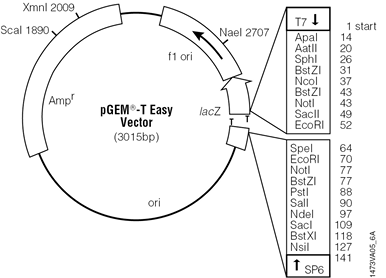As the number of children diagnosed with autism spectrum disorder (ASD) continues to rise, the search for a cause continues. Scientists have been studying genetically modified oxytocin receptors, which have shown promise as a target for studying ASD-related behaviors. One of the obstacles to designing robust scientific experiments for investigating potential ASD causes or treatments is the lack of a truly appropriate model organism for social behaviors in humans (1). Sure, there are the traditional lab rats and lab mice that demonstrate a certain level of social behaviors. However, there has been a loss of natural social behaviors in common lab mice strains because of the reduction in genetic complexity from inbreeding and adaptation to captivity (2). These animals cannot fully represent the depth of human social behaviors, including the ability of humans to form lasting social bonds (1).
Enter: The prairie vole (Microtus ochrogaster).
Prairie voles bond with their partners and mate for life. If one partner dies, the other typically does not look for a new partner. Prairie voles also share in the parental duties, and they exhibit empathy-related consoling behavior during times of stress. This ability to lifelong pair-bond and form strong social bonds is related to oxytocin, dopamine, and vasopressin hormone receptors and pathways. These same pathways are present in humans have been studied in relation to their effects on human social behavior and their dysregulation in ASD and even schizophrenia. These pathways are present in lab mice and rats, but to a lesser extent (1). Because of their similarity to humans in terms of social richness, the prairie vole is gaining popularity as a model organism for scientists interested in human social behaviors.
In a recent publication, Horie et al. used prairie voles to study how social behavior changed when the oxytocin receptor DNA sequence was edited (which would change how the receptor functioned; 3). To modify the oxytocin receptor gene, the researchers decided to use CRISPR/Cas9 genome editing. This technique requires two key components: Cas9 endonuclease, which cuts the DNA like a pair of molecular scissors, and guide RNA, which directs the Cas9 scissors to cut at the proper genomic location.
The researchers knew they wanted to target the coding sequence of the oxytocin receptor gene, and they wanted to look at a variety of mutations and deletions. This would create a diverse group of mutations for which they could evaluate and observe the changes in behavior. Because of this, they designed six different single guide RNAs (sgRNA) to create the mutations in the oxytocin receptor gene.
To be efficient, they needed PCR cloning vectors that would be compatible with in vitro transcription to easily generate the sgRNA. Now they needed DNA templates for 6 different sgRNAs. That’s a lot of templates.

Enter: Promega’s pGEM®-T Easy Vector
Typically, the pGEM®-T Easy Vector is used for cloning PCR products. The pGEM®-T Easy Vector Systems are high-copy number vectors that contain T-overhangs to allow easy ligation with PCR products generated by Pfu DNA polysmerase, multiple cloning sites for flexibility of restriction enzyme choice, and they are available with T7 or SP6 promoters. These vectors would make perfect templates for in vitro transcription.
Horie et al. created individual vectors for each pre-determined sgRNA sequence using the pGEM®-T Easy Vectors. These vectors were used as DNA templates for IVT to create the six different sgRNAs that would be used in their CRISPR/Cas9 experiments.
Using this CRISPR method, 100% of the six prairie vole subjects possessed a mutantoxytocin receptor, and a total of 13 different mutant alleles were generated. As a bonus, there were no off-target effects detected. On top of that, their study became the first study published that performed CRISPR/Cas9 in prairie voles.
From this study, Horie et al. concluded that prairie voles with oxytocin receptor mutations show an increase in repetitive or compulsive behaviors and less social novelty preference, meaning they pay less attention to new objects or unfamiliar voles. Humans with ASD often have trouble relating to other people and/or show a preference repetitive patterns or behaviors. This initial study of CRISPR-mediated oxytocin receptor mutations in prairie voles shows behavior that is relevant to ASD studies in humans. The prairie vole is now poised to take on a greater role as a model organism in gene-targeted mutation studies of social behavior.
Read more about this research here.
Literature Cited
- Johnson and Young (2018) Evolutionary diversity as a catalyst for biological discovery Integr. Zool. 13, 616–33.
- McGraw and Young (2010) The prairie vole: an emerging model organism for understanding the social brain. Trends NeuroSci 33, 103.
- Horie et al. (2019) Oxytocin receptor knockout prairie voles generated by CRISPR/Cas9 editing show reduced preference for social novelty and exaggerated repetitive behaviors. Hormones and Behavior 111, 60–69.
Related Posts
Latest posts by Leah Cronan (see all)
- Mass Spec for Glycosylation Analysis of SARS-CoV-2 Proteins Implicated in Host-Cell Entry - November 10, 2020
- Proteomics from a Different Point of View: Introducing ProAlanase, the Newest Mass-Spec Grade Protease from Promega - August 7, 2020
- Go fISH! Using in situ Hybridization to Search for Expression of a SARS-CoV-2 Viral Entry Protein - July 10, 2020
